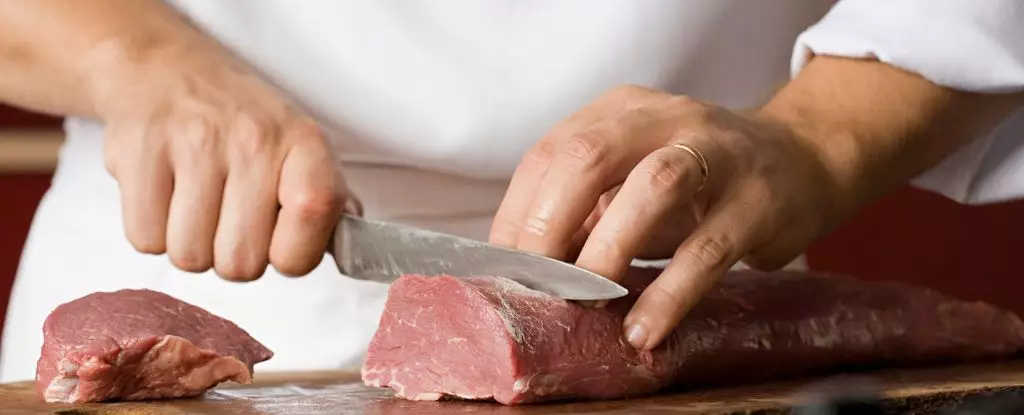In a remarkable series of events that underscores the unpredictable nature of zoonotic diseases, a Florida man in his 70s found himself entrenched in a life-or-death struggle after consuming feral pig meat. This episode, which began in 2017, unfolded into a prolonged medical nightmare—one that illustrates the hidden dangers of hunting and consuming wild game without adequate precautions. The man’s encounter with Brucella suis, a bacterium associated with feral pigs, was not merely a product of bad luck; rather, it reflects a deeper issue concerning the relationship between humans and wildlife, particularly the risks of emerging infectious diseases.
After handling raw pig meat without gloves, the man unknowingly created an open door for infection. This careless moment opened a Pandora’s box, allowing the microorganism to infiltrate his body through the implanted defibrillator, an invaluable device for someone with pre-existing heart conditions. What makes B. suis particularly insidious is its capacity to evade detection; it can linger in the body for extended periods, camouflaged within immune cells while eliciting vague symptoms that can easily be mistaken for less serious ailments. This delay in diagnosis not only prolongs suffering but also complicates treatment strategies.
The Silent Assault on Health
The path of this infection was neither straightforward nor benign. Initially, the symptoms manifested as fever, pain, and unusual hardening of the skin around his chest. Medical interventions grew increasingly complex and frequent, leading to multiple hospital visits as the man grappled with diabetes and heart failure. Each time he entered the hospital, he was plunged into a whirlwind of antibiotics targeting various pathogens, but the elusive Brucella remained undetected.
Even sophisticated diagnostic tools stumbled in identifying the true culprit behind his illness. It was only after persistent symptoms and the migration of his defibrillator to an unusual position—near the left chest wall—did doctors consider the possibility of an underlying infection. This raises critical questions about the reliability of current diagnostic techniques for rare infections and the importance of maintaining a high index of suspicion for atypical pathogens.
Brucellosis: An Emerging Health Threat
Brucellosis, largely characterized by its animal reservoirs such as cattle, sheep, goats, and pigs, has often been dismissed as a relic of past health threats. However, the ongoing proliferation of feral pig populations across the United States, particularly in areas like Florida, poses a renewed risk. Estimates suggest that invasive species of feral swine, numbering over a million in Florida alone, can act as carriers for Brucella, perpetuating potential outbreaks. This scenario prompts a call to action for public health initiatives that not only educate hunters and consumers about the risks but also implement better wildlife management strategies.
What adds layers of complexity to Brucella infections is their resistance to standard treatment protocols. Unlike more common bacterial infections, Brucella can evade conventional antibiotic delivery due to the limited blood supply reaching implants such as defibrillators. This means that when devices become infected, removal often emerges as the only viable option. As evidenced in this case, surgical intervention can bring about a resolution, but it is fraught with risks of its own—risks that older patients, particularly those already battling chronic health issues, may find daunting.
The Case for Enhanced Awareness and Precautions
The unfolding saga of this Florida man serves as a cautionary tale for individuals who partake in hunting or consuming wild meats. The implications stretch beyond personal health, urging a broader societal dialogue about disease transmission from animals to humans, especially in light of the increasing encroachment of humans into wildlife habitats. The man’s experience highlights the need for proper handling and cooking of wild game, public education, and perhaps even regulatory measures to mitigate exposure to potential carriers of zoonotic pathogens.
Moreover, this case accentuates the necessity for health professionals to remain vigilant and informed about less common infections that might masquerade as typical illnesses. A greater understanding of the risks associated with feral animals can lead to timely interventions and better outcomes for affected individuals.
As this Florida man continues his recovery journey, the story behind his medical ordeal transcends his personal experience. It serves as a reminder of the intricate balance between humanity and nature, one that harbors both bounty and peril. Emphasizing the need for safe practices and ongoing awareness can help thwart future incidents, ensuring that our encounters with the wild remain both exhilarating and safe.


Leave a Reply